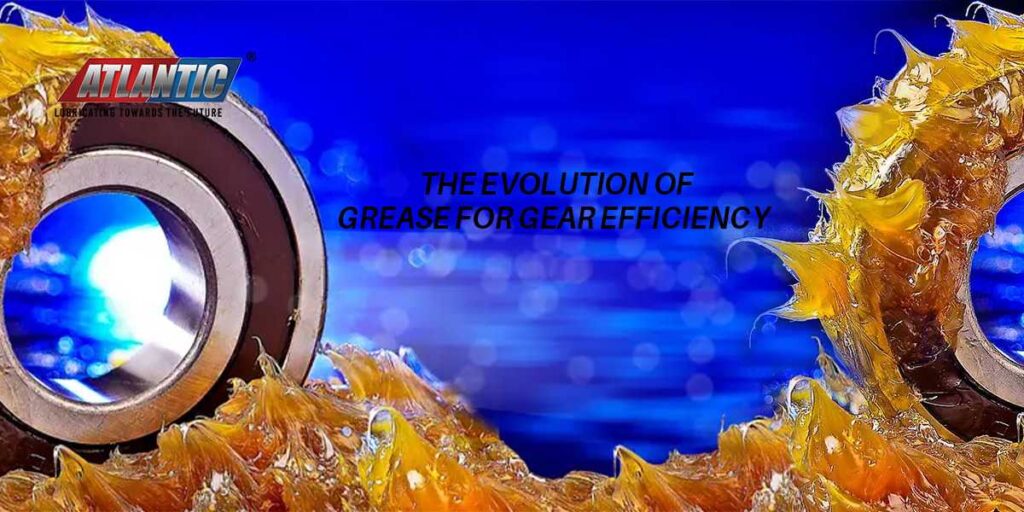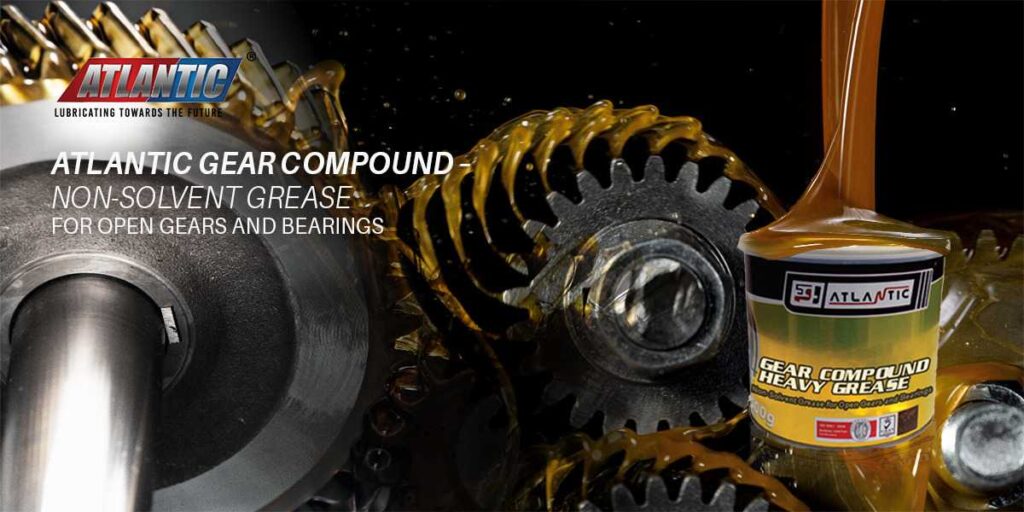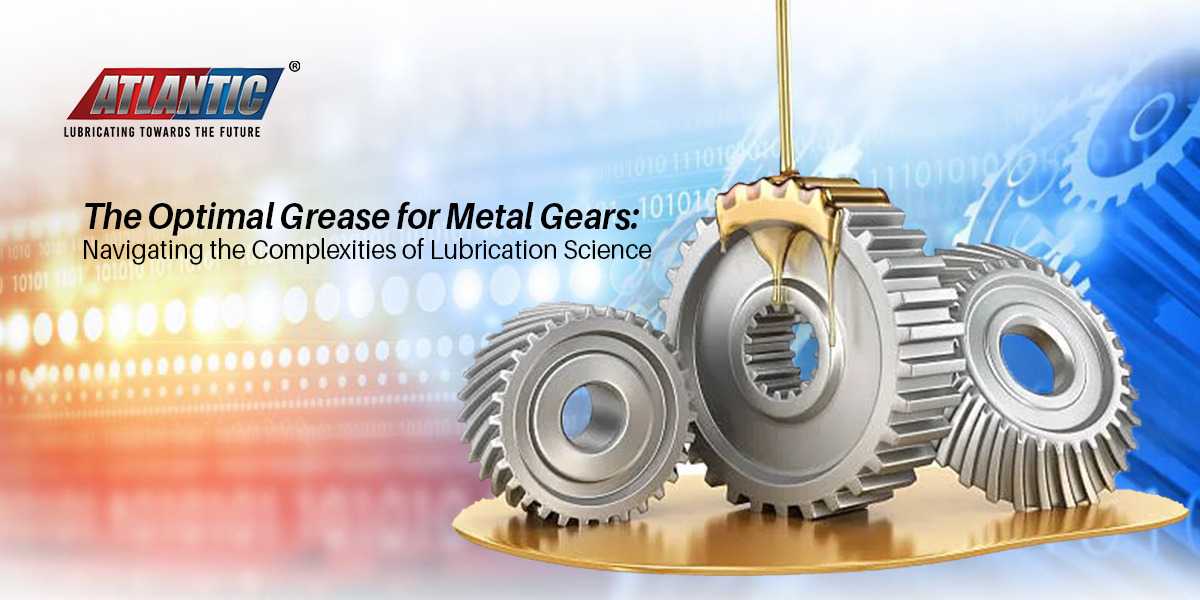In the intricate world of mechanical engineering, the quest for the best grease for metal gears is more than a pursuit of lubrication – it is the quest for materials science and tribology. The ideal grease acts as a multifaceted agent within the machinery, assuming roles beyond mere lubrication. It serves as a barrier against corrosion, a damper for noise and vibrations, and a resilient buffer against the rigors of metal-on-metal contact.
Navigating the Complexities of Lubrication Science
The selection of the most suitable grease for metal gears hinges on understanding its inherent properties – the viscous elasticity that determines its behavior under stress, the shear modulus that influences its ability to withstand deformation, and the complex flow characteristics that govern its performance under dynamic conditions. These parameters are not static; they are influenced by the intricate composition of the grease, which typically comprises a base oil, thickeners, and additives, each selected for their unique contributions to the lubricant’s performance.
Base Oils and Thickeners are The Foundation of Gear Grease

At the core of the grease composition lies the base oil, which constitutes the majority of its volume. Predominantly paraffinic mineral oils, blended with synthetic variants, provide the foundational fluidity required for effective lubrication. However, the quality of the grease is defined by its thickening, often around 10% of the composition, which transforms the liquid oil into a semi-solid that adheres to the gear surfaces. Traditional metal greases with calcium and lithium complexes remain popular for their stability and temperature resilience. Yet, inorganic thickeners like clay, silica gel, and molybdenum disulfide are gaining favor in applications demanding superior performance at elevated temperatures.
Polymeric thickeners – such as polyolefins, PTFE, and polyureas, are becoming the materials of choice for the future. Their molecular composition lends the grease exceptional mechanical stability and longevity. This is particularly crucial as the gears they lubricate are often subjected to harsh operational conditions, including extreme pressures, fluctuating temperatures, and the ceaseless onslaught of wear and tear.
A dichotomy characterizes the evolving demands of the lubricant market: on one end, the drive for cost-effective, commoditized greases that fulfill basic requirements; on the other, an increasing appetite for high-performance, specialized lubricants that promise longevity and sustainability. Regulations like the EU Reach Directive, which requires environmentally friendly formulations, exacerbate this polarization by driving the industry toward greases that are not only efficient but also ecologically responsible.
The Role of Thickener and Base Oil in Prevailing Rolling Contacts
For metal gears operating under varying loads and speeds, the best grease is one that exhibits superior elasto-hydrodynamic (EHD) performance. In this case, the grease must form a robust EHD film between contact surfaces to minimize direct metal-to-metal interaction, thereby reducing wear and extending the lifespan of the gear assembly. The thickener, often a complex soap, serves as a scaffold, holding the base oil in place and releasing it gradually under shear. This ensures a consistent presence of lubricant at the point of contact, especially in fully flooded conditions where an ample supply of grease is maintained within the contact zone.
Under starved conditions, where the lubricant supply is limited, the role of the thickener is even more pronounced. The thickener must release the base oil efficiently to maintain a film, albeit thinner, that can still provide adequate separation of the rolling surfaces. Starved lubrication poses the risk of increased friction and accelerated wear, which necessitates a grease formulation that can withstand such punishing conditions without breakdown.
Grease Composition
The breaker grease, typically a high-viscosity index fluid, is selected for its film-forming abilities and its reaction to the thermal and mechanical stresses inherent in gear operation. Many people prefer synthetic base oils like polyalphaolefins (PAOs) and esters because they don’t change much when heated or cooled, which is important for keeping the film thickness when gearboxes are heated up.
The synergy between the thickener and the base oil defines the rheological characteristics of the grease. The complex viscosity of the grease must be optimized to allow for ease of flow under low shear but sufficient stiffness to maintain film thickness under high load. This delicate balance is the hallmark of a high-performance grease suitable for metal gears.
In assessing the best grease for metal gears, one must also consider the additives that enhance the performance characteristics of the base oil and thickener. Anti-wear additives, extreme pressure agents, and antioxidants all play a role in fortifying the grease against the multifaceted challenges it faces within the operational environment of gears.
The Evolution of Grease for Gear Efficiency

The evolution of grease formulation is a response to the rigorous demands of modern gear technology. With the advancements in material science and tribology, the development of greases that can operate effectively in a range of conditions, from fully flooded to severely starved lubrication environments, is critical. The best grease for metal gears is, therefore, a sophisticated blend of chemistry and engineering tailored to meet the specific needs of the application and the rigorous standards of industry and environmental regulations.
The base oil’s viscosity index (VI) is a critical factor; a higher VI indicates less change in viscosity with temperature fluctuations, which is essential for maintaining an optimal lubricating film across the broad operational temperature range of gears. Synthetic base oils like PAOs and esters not only have high VIs but also better low-temperature fluidity, ensuring consistent performance during cold starts and reducing the energy required for gear movement.
Evaluating Grease Performance Through Testing
Four-Ball Wear Test
Testing methods for evaluating grease performance in metal gear applications are rigorous and multifaceted. The Four-Ball Wear Test, for instance, measures the wear-preventive characteristics by observing the wear scars on steel balls under specific test conditions. This simulates the stress and friction gears face under load. The Timken OK Load Test is another method that determines the extreme pressure properties of the grease by assessing the maximum load the lubricant can bear before failure.
Falex Test
Furthermore, the Falex Test is employed to evaluate the shear stability of the grease—a critical property that affects the longevity and efficacy of the lubricating film under the high shear conditions experienced by gears in service.
Roll Stability Test
In addition, the Roll Stability Test assesses the consistency of grease after being subjected to mechanical work, mimicking the action within a rolling bearing or gear application.
Ultimately, the best grease for metal gears is one that passes these stringent tests with colors, ensuring it can maintain its protective properties under the variable and often harsh conditions faced during gear operation.
ATLANTIC GEAR COMPOUND – Non-Solvent Grease for Open Gears and Bearings

The ATLANTIC GEAR COMPOUND stands out as an optimal grease for metal gears, tailored to meet the demanding requirements of industrial gear systems. Its base, crafted from high-viscosity paraffinic oils and thickened with lithium hydroxy stearate soap, ensures a high degree of thermal stability and excellent adhesion to gear surfaces. The addition of polymers in its formulation enhances its load-bearing capacity, making it resilient under extreme pressure and stress, which is essential for maintaining gear integrity and performance.
Incorporating molybdenum disulfide and graphite, the grease significantly reduces friction and wear, protecting metal gears from the common issues of pitting, scoring, and galling. These solid lubricants are key to preserving gear even in the boundary lubrication regime. The compound’s advanced additive technology, which includes extreme pressure and antioxidant agents, further safeguards gears against corrosion and oxidative degradation, extending the operational life of the equipment.
The WHEEL BEARING GREASE is made to be easy to use in centralized lubrication systems. It makes sure that critical gear components get consistent and reliable delivery, keeping them properly lubricated in a wide range of industrial conditions and settings.
As we forge ahead, the parameters for selecting the best grease for metal gears become more complex. It is no longer sufficient to consider only the immediate mechanical requirements; the broader implications for health, safety, and the environment also demand our attention. The ideal grease, therefore, is the product of sophisticated engineering, meticulous material selection, and a forward-thinking approach to sustainability.

